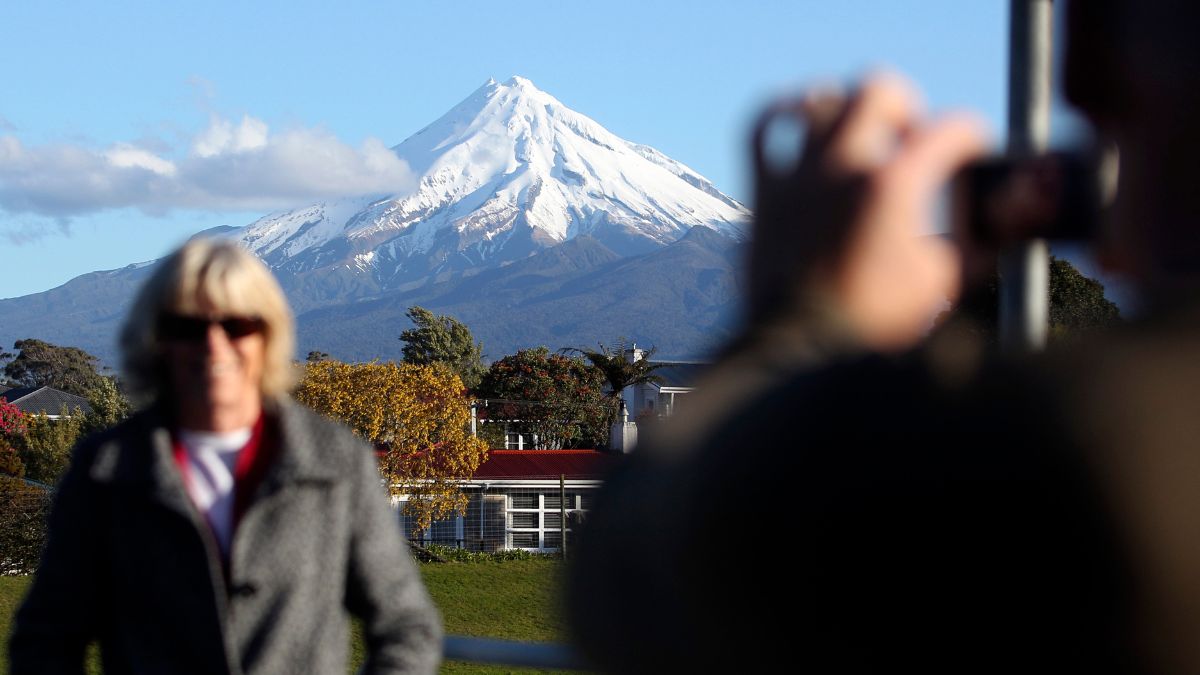A mountain in New Zealand will have the same legal rights as a person. Mount Taranaki, now known by its Māori name — Taranaki Maunga, was recognised as a legal person on Thursday (January 30) after a settlement became law.
The snow-capped dormant volcano is considered an ancestor by Indigenous people in New Zealand. The new law grants the mountain all the rights and responsibilities of a human being.
Let’s take a closer look.
What does the law say?
The Taranaki Maunga Collective Redress Bill became law after receiving a nod from New Zealand’s Parliament Thursday. It was passed by 123 lawmakers unanimously.
It gives Taranaki Maunga all rights, powers, duties, responsibilities and liabilities of a person.
The legal personality of the mountain will be known as Te Kāhui Tupua, which the law sees as “a living and indivisible whole,” as per Associated Press (AP).
The legislation covers Taranaki and its surrounding peaks and land, “incorporating all their physical and metaphysical elements.”
Hundreds of Māori from the Taranaki region were present in Parliament as the bill became law, recognising their perspective that natural features are ancestors and living beings, reported BBC.
Reactions to the law
The law means Taranaki Maunga will own itself, with four members from local Māori iwi, or tribes, and four others appointed by New Zealand ’s Conservation Minister being “the face and voice” of the mountain.
“The mountain has long been an honoured ancestor, a source of physical, cultural and spiritual sustenance and a final resting place," Paul Goldsmith, the government minister responsible for the settlements with Māori tribes, told Parliament in a speech on Thursday.
“Today, Taranaki, our maunga [mountain], our maunga tupuna [ancestral mountain], is released from the shackles, the shackles of injustice, of ignorance, of hate,” Debbie Ngarewa-Packer, co-leader of political party Te Pāti Māori [the Māori Party], was quoted as saying by AP.
“We grew up knowing there was nothing anyone could do to make us any less connected,” she added.
Aisha Campbell, who is also from a Taranaki iwi, told 1News that the mountain “is what connects us and what binds us together as a people”.
Why does it matter?
The law aims to undo the historic wrongs done to Māori from the Taranaki region during colonisation.
Taranaki Maunga will no longer be officially known as Mount Egmont – the name given to the mountain by British explorer Captain James Cook in 1770 after he spotted it from his ship.
In 1840, the Treaty of Waitangi was signed between Māori tribes and representatives of the British crown. This pact, which established New Zealand as a country, granted Māori rights to their land and resources.
However, the Crown breached the treaty, breaking its promise to Māori.
As per BBC, Goldsmith admitted that “breaches of the Treaty mean that immense and compounding harm have been inflicted upon the whānau [wider family], hapū [sub-tribe] and iwi of Taranaki, causing immeasurable harm over many decades”.
“Traditional Māori practices associated with the mountain were banned while tourism was promoted,” he acknowledged.
The mountain’s legal rights will ensure its traditional uses are restored and conservation work is done to protect its native wildlife.
The public will continue to have access to the mountain.
The settlement came with an apology from the government for confiscating Mt Taranaki and over a million acres of land from local Māori in the 1860s.
This is not the first time New Zealand has granted legal personhood to its natural feature. In 2014, Te Urewera, a vast native forest on the North Island, became the first to get such rights.
New Zealand recognised the Whanganui River as human in 2017.
With input from agencies


)

)
)
)
)
)
)
)
)



